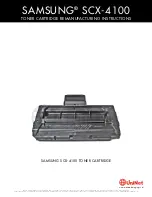
4
Settings
Basic settings
Always ensure that the basic setting made by
Öhlins is correct. It is adapted to the make and
model (in its original state) and for a rider of
average weight.
WARNING
Incorrect spring action can produce a fork angle
that is too steep or too flat.This in turn will give a
tendency for oversteering or understeering, which
could seriously affect the handling characteristics
of the motorcycle.
The original setting of the front fork, when delivered
from Öhlins, should always be a base when the
settings are changed by use of the adjustment
devices.
Recommendations
The difference should not deviate from the
following sizes, if no other recommended settings
are given in the Mounting Instructions:
Free sag: (R1-R2), (F1-F2)
Rear:
MX/Enduro
30
±
5 mm
Front:
MX/Enduro
30
±
5 mm
Ride height: (R1-R3), (F1-F3)
Rear:
MX
100
±
5 mm
Enduro
30% of the total stroke
Front:
MX/Enduro
80
±
5 mm
Setting the spring pre-load
Measuring
Pre-load on the spring/springs is very important,
because it affects the height of the motorcycle and
the fork angle. Consequently, handling characteristics
can be changed, even negatively. Proceed as follows
(it will be much easier if done by two persons):
•
Place the motorcycle on a stand, so the
front fork and the rear end are in fully
extended position.
•
Measure the distance, eg. from the
lower edge of the rear mudguard or
from a point marked by a piece of tape,
immediately above the rear wheel axle,
to the wheel axle (R1).
•
Make a similar measurement on the front axle,
e.g. from the bottom of the upper fork crown
to the front wheel axle (F1).
•
Allow the motorcycle (without rider) to
apply load on the springs and repeat the
measuring procedure (R2, F2).
•
Then take the same measurements with
the rider and equipment on the
motorcycle (R3, F3). It is important that the rider
has a correct riding posture, so that the
weight is balanced on the front and rear
wheel in the same way as when riding.
Bike on a stand.
F1
R1
Bike on the ground.
F2
R2
Bike with rider on.
F3
R3





































